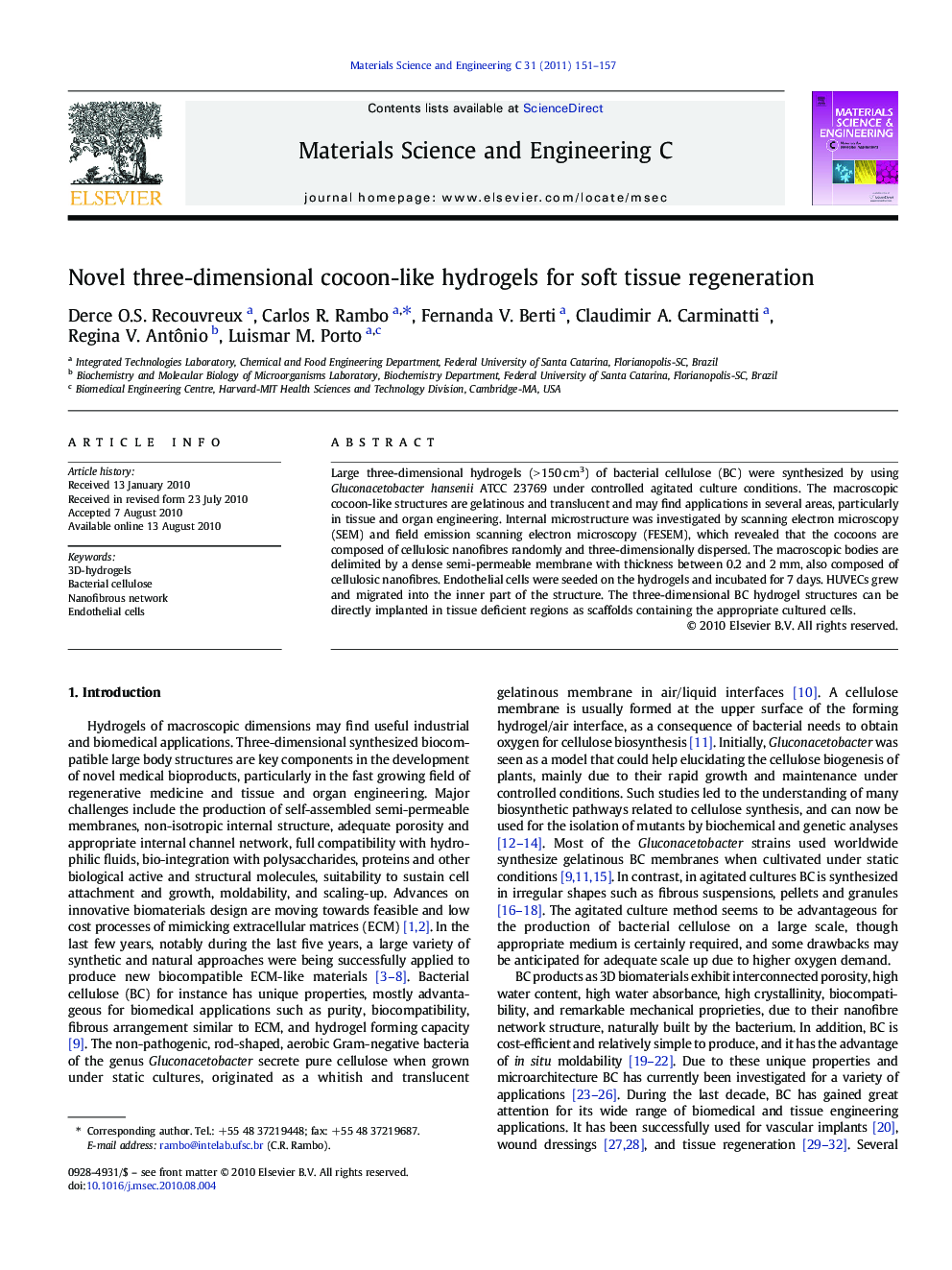| Article ID | Journal | Published Year | Pages | File Type |
|---|---|---|---|---|
| 10614762 | Materials Science and Engineering: C | 2011 | 7 Pages |
Abstract
Large three-dimensional hydrogels (>Â 150Â cm3) of bacterial cellulose (BC) were synthesized by using Gluconacetobacter hansenii ATCC 23769 under controlled agitated culture conditions. The macroscopic cocoon-like structures are gelatinous and translucent and may find applications in several areas, particularly in tissue and organ engineering. Internal microstructure was investigated by scanning electron microscopy (SEM) and field emission scanning electron microscopy (FESEM), which revealed that the cocoons are composed of cellulosic nanofibres randomly and three-dimensionally dispersed. The macroscopic bodies are delimited by a dense semi-permeable membrane with thickness between 0.2 and 2Â mm, also composed of cellulosic nanofibres. Endothelial cells were seeded on the hydrogels and incubated for 7Â days. HUVECs grew and migrated into the inner part of the structure. The three-dimensional BC hydrogel structures can be directly implanted in tissue deficient regions as scaffolds containing the appropriate cultured cells.
Keywords
Related Topics
Physical Sciences and Engineering
Materials Science
Biomaterials
Authors
Derce O.S. Recouvreux, Carlos R. Rambo, Fernanda V. Berti, Claudimir A. Carminatti, Regina V. Antônio, Luismar M. Porto,
